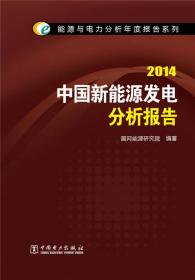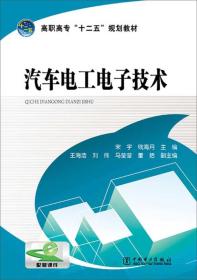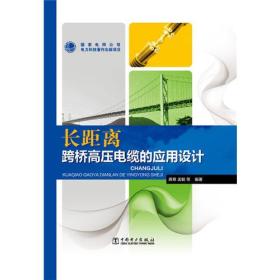
80x86微处理器原理与接口技术(英文版)
¥ 10.3 2.2折 ¥ 46 全新
库存2件
河北保定
认证卖家担保交易快速发货售后保障
作者周永华 著
出版社北京交通大学出版社
出版时间2018-11
版次1
装帧平装
货号9787512136458
上书时间2024-11-13
- 最新上架
商品详情
- 品相描述:全新
图书标准信息
- 作者 周永华 著
- 出版社 北京交通大学出版社
- 出版时间 2018-11
- 版次 1
- ISBN 9787512136458
- 定价 46.00元
- 装帧 平装
- 开本 16开
- 页数 269页
- 字数 392千字
- 【内容简介】
-
本书将深入浅出地介绍intel80x86微处理器的工作及接技术知识,探讨基于80x86微处理器的工程系统设计及应用。针对目前靠前上相关书籍在接技术方面介绍比较欠缺的问题,本书致力于系统介绍80x86微处理器的工作及接技术应用。本书内容包括9章,内容包括:微处理器介绍、微处理器架构、指令集、汇编语言编程、存储器、中断、io接技术、ad和da转换、线接等。 - 【目录】
-
chapter 1 introduction to the microprocessor and puter
1.1 microprocessor-based personal puter system
1.1.1 hardware and software system
1.1.2 operational principle
1.1.3 performance indexes
1.2 number system and codes
1.2.1 number system
1.2.2 conversion between number systems
1.2.3 codes
1.3 representation of the numbers in the puter
1.3.1 fixed integers
1.3.2 original binary data, radix-1 plement and radix plement
1.4 development of microputers
1.4.1 hardware advancement
1.4.2 programming advancement
1.4.3 evolution of microprocessors
1.4.4 adopted advanced technology
1.5 questions
chapter 2 the microprocessors and architecture
2.1 8086/8088 microprocessors
2.1.1 internal architecture and operating modes of 8086/8088 cpu
2.1.2 pins and the pin functions
2.1.3 internal registers of intel microprocessors
2.1.4 memory structure of 8086/8088
2.1.5 generating memory addresses
2.1.6 bus timing
2.2 80486 microprocessor
2.2.1 internal structure
2.2.2 operating modes
2.2.3 register and memory structure
2.3 pentium microprocessor
2.3.1 internal structure
2.3.2 performance characteristics
2.4 questions
chapter 3 instruction set
3.1 addressing modes
3.2 instruction formats of 80x86
3.3 instruction set
3.3.1 data movement instructions
3.3.2 arithmetic instructions
3.3.3 logic instructions
3.3.4 program control instructions
3.4 questions
chapter 4 assembly language programming
4.1 assembly language fundamentals
4.1.1 the format of assembly language
4.1.2 symbols, data and expressions of assembly language
4.2 eudo instructions
4.2.1 define segments
4.2.2 simplified eudo instructions of segment definition
4.2.3 data definition statement
4.2.4 symbol definition statement
4.2.5 procedure definition
4.2.6 some other eudo-instructions
4.3 dos functions and bios functions
4.3.1 dos functions
4.3.2 bios functions
4.4 programming
4.4.1 introduction of programming
4.4.2 sequential structure program
4.4.3 branched program
4.4.4 loop program
4.4.5 subroutines
4.5 examples of programming design
4.6 introduction to microsoft macro assembler
4.7 questions
chapter 5 memory
5.1 classification and performance indicators of memory
5.1.1 classification of puter memory
5.1.2 classification of semiconductor memory
5.1.3 performance indicators
5.2 rom
5.2.1 eprom
5.2.2 eeprom
5.2.3 flash
5.2.4 memory card
5.3 ram
5.3.1 sram
5.3.2 dram
5.3.3 high speed ram
5.3.4 multi-port ram
5.4 memory expansion design
5.4.1 basic structure of the memory
5.4.2 memory expansion design
5.4.3 address deco
5.4.4 examples
5.5 cache
5.5.1 working principle
5.5.2 access consistency of cache and main memory
5.5.3 address mapping of cache
5.5.4 recement algorithm of cache
5.6 virtual memory
5.7 questions
chapter 6 interrupts
6.1 overview of interrupts
6.1.1 classification of interrupt sources
6.1.2 interrupt source priority arbitration
6.1.3 interrupt processing
6.2 80x86 interrupt system
6.2.1 interrupt system structure
6.2.2 interrupt and response process in real mode
6.2.3 store or get an interrupt vector in the vector table
6.3 interrupt controller 8259a
6.3.1 structure and pins of 8259a
6.3.2 programming 8259a
6.3.3 examples
6.4 questions
chapter 7 i/o interface chip 8255a
7.1 i/o interface overview
7.1.1 the structure of i/o interface
7.1.2 the functions of i/o interface
7.1.3 address numbering of i/o ports
7.1.4 control approaches of data transmissions
7.2 parallel interface chip 8255a
7.2.1 structure and pins of 8255a
7.2.2 operating modes of 8255a
7.2.3 programming 8255a
7.2.4 application of 8255a
7.3 questions
chapter 8 timer/counter 8254
8.1 structure and pins of 8254
8.1.1 internal structure
8.1.2 pins of 8254
8.2 operating modes of 8254
8.3 programming 8254
8.3.1 control word
8.3.2 setting the initial count
8.4 application of 8254
8.5 questions
chapter 9 serial interface chip 8250
9.1 serial munication introduction
9.1.1 modes of serial munication
9.1.2 data format of serial munication
9.1.3 rs-232c serial interface standard
9.2 structure and pins of 8250
9.2.1 internal structure
9.2.2 pins of 8250
9.3 internal registers of 8250
9.3.1 line control register
9.3.2 programmable baud generator
9.3.3 line status register
9.3.4 modem control register
9.3.5 modem status register
9.3.6 interrupt identification register
9.3.7 interrupt enable register
9.4 programming 8250
9.5 application of 8250
9.6 questions
chapter 10 dma controller 8237a
10.1 internal structure
10.2 pins of 8237a
10.3 operating modes of 8237a
10.4 timing diagram of 8237a
10.5 internal registers of 8237a
10.6 programming 8237a
10.7 examples
10.8 application of 8237a
10.9 questions
chapter 11 a/d and d/a conversion interfaces
11.1 a/d and d/a conversions in puter control system
11.2 d/a conversion and interface technology
11.2.1 principle of d/a conversion
11.2.2 typical d/a converter
11.2.3 application examples of d/a converter
11.3 a/d conversion and interface technology
11.3.1 principle of a/d conversion
11.3.2 typical a/d converter
11.3.3 timing diagram
11.3.4 application examples of a/d converters
11.3.5 application issues to be noted
11.4 questions
chapter 12 bus interface
12.1 overview of the bus
12.1.1 classification of the bus
12.1.2 main parameters of buses
12.2 isa bus
12.3 the pcibus
12.3.1 introduction of pci
12.3.2 signals of the pci
12.3.3 subtractive decode of pci/isa bridge
12.3.4 pci bus operations
12.4 the usb
12.4.1 introduction of usb
12.4.2 ition and principle of usb
12.5 the agp
12.6 questions
references
点击展开
点击收起
相关推荐
— 没有更多了 —












以下为对购买帮助不大的评价